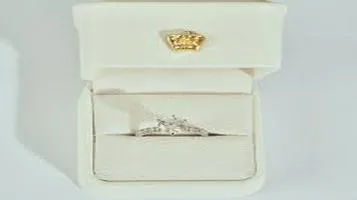The Timeless Elegance of Engagement Rings: A Comprehensive Review
Engagement rings are symbolic jewelry pieces traditionally exchanged during a proposal of marriage, representing commitment and love. Typically worn on the fourth finger of the left hand, these rings often feature a central gemstone, with diamonds being the most popular choice due to their durability and brilliance. Engagement rings come in various styles, from classic solitaires to intricate vintage designs, and can be crafted from a range of metals such as platinum, white gold, yellow gold, and rose gold. The choice of ring often reflects personal taste and cultural traditions. Beyond aesthetics, engagement rings carry emotional significance, serving as a lasting symbol of a couple’s promise to build a future together, making them cherished heirlooms for generations.

Engagement rings have long been the quintessential symbol of commitment, love, and the promise of a shared future. As societal norms and personal preferences evolve, the styles, materials, and meanings behind these rings have diversified significantly. This review delves into the multifaceted world of engagement rings, exploring their historical significance, contemporary trends, and the factors to consider when choosing the perfect ring.
Historical Significance
The tradition of giving engagement rings dates back to ancient Rome, where women wore rings made of ivory, flint, bone, copper, and iron to signify a business contract or to affirm mutual love and obedience. The custom of diamond engagement rings, however, began in 1477 when Archduke Maximilian of Austria presented Mary of Burgundy with a diamond ring, sparking a trend among European nobility.
Diamonds have since become synonymous with engagement rings, largely due to a successful marketing campaign by De Beers in the 20th century, coining the iconic phrase, “A Diamond is Forever.” This campaign not only solidified the diamond's status as the premier gemstone for engagement rings but also established the notion that the value of the ring should be equivalent to three months' salary.
Contemporary Trends
Modern engagement rings are as diverse as the couples who wear them. While traditional diamond solitaires remain popular, many individuals are opting for unique designs that reflect their personal style and values.
1. Alternative Gemstones: While diamonds remain the most popular choice, other gemstones like sapphires, emeralds, and rubies are gaining traction. These stones offer vibrant colors and can be more affordable, allowing for larger stones or more intricate settings within the same budget.
2. Lab-Grown Diamonds: Ethical and environmental concerns have led to a rise in the popularity of lab-grown diamonds. These diamonds are physically and chemically identical to natural diamonds but are created in controlled environments, reducing the environmental impact and often costing 20-30% less.
3. Vintage and Heirloom Rings: Many couples are drawn to the charm and history of vintage or heirloom rings. These rings not only offer unique designs but also carry sentimental value, often becoming cherished family heirlooms.
4. Custom Designs: Custom engagement rings allow couples to create a piece that is truly one-of-a-kind. From selecting the perfect gemstone to designing an intricate setting, custom rings offer endless possibilities for personalization.
Factors to Consider When Choosing an Engagement Ring
Choosing an engagement ring is a significant decision that involves several important considerations:
1. The 4 Cs: When selecting a diamond, it is essential to understand the 4 Cs – Cut, Color, Clarity, and Carat weight. These factors determine the diamond's quality and value. The cut affects the stone's brilliance, color grades the stone's hue, clarity refers to the presence of inclusions or blemishes, and carat weight measures the diamond's size.
2. Metal Type: The choice of metal for the band is also crucial. Common options include platinum, white gold, yellow gold, and rose gold. Each metal has its unique look and properties. Platinum is durable and hypoallergenic, while gold offers a classic look with various color options.
3. Ring Style: The ring's style should reflect the wearer's personality and lifestyle. Classic styles like solitaires and halo settings are timeless, while modern designs may incorporate geometric shapes or mixed metals. It's also important to consider the wearer’s daily activities; for instance, a lower-set stone might be more practical for someone with an active lifestyle.
4. Budget: Establishing a budget before shopping for an engagement ring can help narrow down options and prevent overspending. It's worth noting that various financing options are available, and prioritizing certain aspects of the ring over others can help stay within budget.
5. Ethical Sourcing: With growing awareness of ethical issues in the jewelry industry, many couples prioritize conflict-free diamonds and fair-trade gemstones. Reputable jewelers often provide certification and sourcing information to ensure ethical practices.
Conclusion
Engagement rings are more than just beautiful pieces of jewelry; they are symbols of love, commitment, and a shared future. The evolution of styles and materials reflects changing societal values and personal preferences, offering endless possibilities for couples to find a ring that perfectly represents their unique bond. Whether opting for a traditional diamond solitaire, a vibrant sapphire, a vintage heirloom, or a custom-designed piece, the perfect engagement ring is one that resonates with the wearer's heart and soul.
In a world of infinite options, the journey to finding the perfect engagement ring is a deeply personal and meaningful experience. By considering factors such as the 4 Cs, metal type, ring style, budget, and ethical sourcing, couples can navigate this journey with confidence and joy, ultimately selecting a ring that will be cherished for a lifetime.






